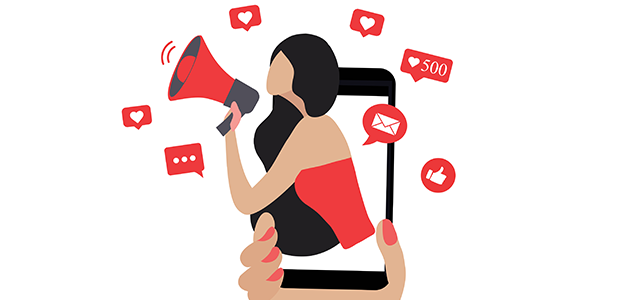
Social Media Soars to New Heights, But is Influencer Fatigue on the Horizon?
Recent data from The Global State of Digital indicates that a total of 4.88 billion unique user identities engaged with social media platforms over the past 30 days. This accounts for a whopping 60.6% of the world’s entire population, underscoring a significant milestone in the global adoption of social media.
The past few years have witnessed the meteoric rise, growth, and popularity of social media influencers, and overwhelmingly so. It comes as no surprise that we might be inching towards influencer fatigue. Statistics reveal that only 3% of consumers are influenced by celebrity influencers to purchase specific products, whereas 47% are experiencing fatigue from repetitive influencer content. Does this mean that influencer marketing need not be a priority while allocating marketing budgets for the next year? Let’s see for ourselves.
Are we really switching off on influencers?
As we spend more time on platforms like Instagram, Twitter (X), TikTok, and Facebook, we also acquire a heightened awareness of the pervasive nature of sponsored content and advertising that now inundates social media. This is evident from the big shift in consumer behaviour, largely driven by millennials and Gen Z. They are no longer passive consumers of marketing content but actively seek to engage with each other and brands. They appreciate and embrace the kindred spirit among those they identify with based on shared interests and values, irrespective of demographics. Guided by this affinity, they form their own communities or tribes.
They don’t hesitate to readily call out influencers and celebrities when instances of inauthenticity catch their attention. Quick to spot inconsistencies or discrepancies between an influencer’s carefully curated online persona and their real-life actions, this generation of social media users has developed a keen sense for detecting gimmicks. They can discern when someone is merely seeking to gain followers, likes, or financial endorsements under the guise of genuinely sharing their honest opinions and values.
Now, what happens when we put these young generations of super-aware consumers together with a heightened sense of caution in spending, accentuated by inflation? You get #de-influencing, which according to a Meltwater search generated an impressive 11,000 mentions in the media (social media included) this year, which is an increase of 58615% compared to 2022.
While it may be tempting to reconsider influencer marketing as less of a priority for the next year, what brands really need to do is rethink what constitutes an influencer, alter the traditional top-down approach when it comes to influencer marketing strategies, and get creative with ways to engage with consumers. Going by numbers, there’s certainly room for improvement.
Redefining influencers and identifying your tribe
Social media’s saturation with influencers, however, makes one thing clear - it’s not as much about the clout as it is about the connection. For brands to materialise that connection with their audience, it takes a more intricate understanding of which individuals, despite having smaller numbers of followers, will resonate with the people you are targeting. They may not be the most perfectly polished or the ones with the biggest number of followers, but what they offer are pockets of authenticity in a terrain now characterised by the profusion of influencer culture. Because, as social media usage continues to grow, authenticity will remain the most valuable currency.
For instance, micro-influencers typically have a niche or specific focus, positioning them well enough to reach a highly targeted audience that aligns precisely with a brand’s ideal customer. Thanks to this precision, efforts in this direction can lead to higher engagement and conversion rates. Whereas micro-influencers typically have between 10,000 and 100,000 followers, nano-influencers (1000 to 10,000 followers) are also sometimes roped into the Micro category. For example, Evie Scarlett Farquharson who has a following of 33.4k is a micro-influencer and Tatiana with 1.8k followers is a nano-influencer.
Moreover, with close-knit communities online, brands not only acquire customers who make repeat purchases but also individuals who evolve into brand advocates, actively sharing the brand message and attracting referrals. This can go a long way when it comes to building credibility within a medium where standing out proves to be extremely challenging.
It’s a quest, but it’s worth it
The emergence and rise of the de-influencing phenomenon, where individuals showcase products and offer advice on what not to purchase, serves as a reminder that the true power of influencer marketing rests upon the bedrock of audience trust. Influencer marketing should definitely be a priority for marketers in 2024, but so should be the efforts directed towards understanding and identifying your tribe on a deeper level. Who are the like-minded individuals that can reflect what your brand stands for? Who are those individuals who will likely form meaningful connections with your tribe members? It’s very much worth finding out.

